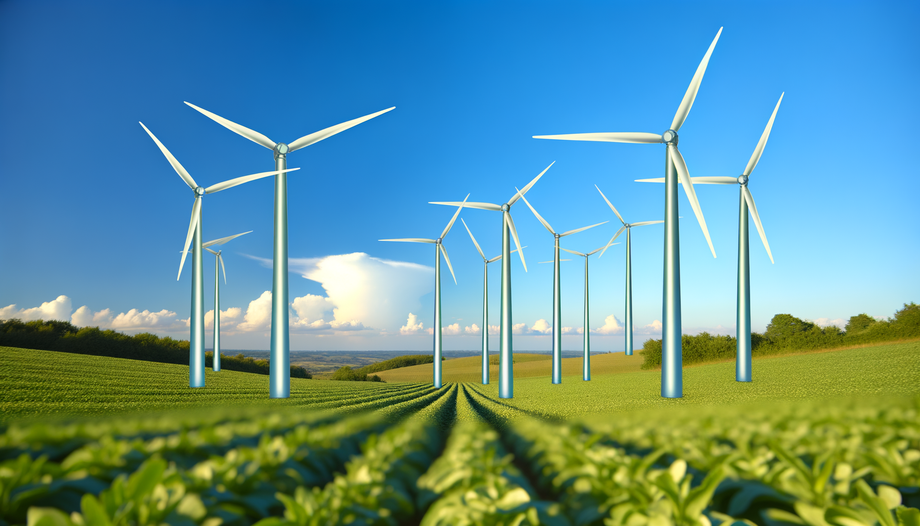In the pursuit of sustainable energy solutions, the transformation of wind energy technology continues to captivate both industry experts and environmentally conscious consumers. The iconic image of blade-rotating wind turbines is slowly giving way to something quieter, less obtrusive, and innovative—bladeless wind turbines. As consumer awareness around noise pollution and wildlife safety grows, these bladeless designs are rising to prominence, showcasing an energy solution that is as environmentally friendly as it is efficient.
Understanding Bladeless Wind Turbines
Bladeless wind turbines, often referred to as vortex turbines, operate distinctly from their traditional counterparts. Instead of spinning blades capturing wind energy, bladeless turbines employ a series of oscillations and vibrations to harness energy. These structures feature a fixed mast with an oscillating top facilitated by the wind’s natural flow.
Advantages include:
- Reduced Noise: Bladeless turbines produce significantly less noise, echoing the natural sounds of the landscape rather than disrupting it.
- Wildlife Protection: Unlike traditional turbines, these do not pose risks to birdlife and other wildlife, addressing one of the primary environmental critiques of wind energy.
- Aesthetic Integration: Offering a sleek design, they harmonize with both rural and urban landscapes without dominating the scenery.
The Noise Pollution Challenge
Noise pollution remains a significant concern as more communities embrace renewable energy. Traditional wind turbines, notorious for their mechanical noises, have often disturbed rural tranquility, impacting human well-being and wildlife habitats.
- Human Impact: The consistent hum of blades passing an aerodynamic point can disrupt sleep patterns and affect mental health in nearby residential areas.
- Environmental Impact: The unexpected noises can drive local wildlife away, destabilizing ecosystems.
By contrast, bladeless turbines employ a silent mode of operation, addressing these concerns and increasing community acceptance of renewable energy projects.
Navigating Wildlife Safety
Wind turbines and birds have notoriously had a fraught relationship. Bird and bat fatalities caused by turbine blades have long been a pain point for conservationists and communities alike. However, bladeless technology changes this narrative.
- Bird Safety: With no whirring blades, the danger of collisions with flying wildlife is eliminated.
- Natural Harmony: The structures allow for the preservation of avian habitats and contribute to biodiversity.
This new development in wind energy technology supports efforts to protect local wildlife, an essential aspect of sustainable energies harmonizing with environmentally conscious values.
The Economic Factor
In addition to being environmentally advantageous, bladeless turbines are becoming financially viable. They typically feature lower production and maintenance costs compared to their bladed counterparts.
- Cost-Effective Compliance: Bladeless turbines reduce the need for regular maintenance. With fewer moving parts, expenses related to wear and tear naturally decrease.
- Scalable Deployability: Suitable both for smaller scale installations and vast wind farms, they offer flexibility in energy supply.
As adoption grows with proliferating awareness around their benefits, economies of scale will further minimize costs, making bladeless turbines an accessible choice for more entities.
The Growing Consumer Awareness
The digital age has significantly impacted consumer awareness regarding environmental issues. Social platforms disseminate real-time information on everything from technological developments to climate change. This global connectivity empowers individuals and communities to drive inquiries demanding more from how technology integrates with our natural surroundings.
- Educated Choices: Consumers can now make informed decisions about their energy sources based on sound ecological principles.
- Community Engagement: Platforms like LinkedIn allow people to discuss, share, and advocate for solutions that prioritize eco-friendliness and sustainability.
Conclusion
As the intersection of technology and environmental consciousness becomes clearer, bladeless wind turbines represent a significant step forward in the sustainable energy narrative. As awareness continues to grow about noise pollution and wildlife impact, these silent, non-intrusive towers stand poised as the harbingers of a cleaner, greener future.
With their visual elegance, environmental harmony, and economic feasibility, bladeless designs are carving out a special place in the future landscape of renewable energies—a silent yet powerful testament to human ingenuity and environmental stewardship.

